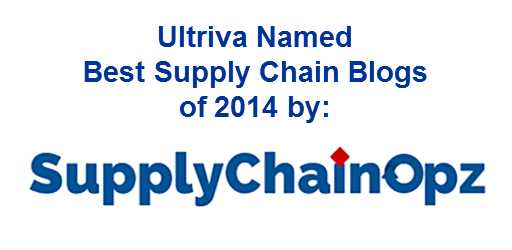CSCMP’s Supply Chain Quarterly ([LC1] bit.ly/1ZSunXg) shared how the Ultriva by Upland online portal allowed Ingersoll Rand's Trane division to achieve better communication with its suppliers. The resulting inventory visibility helped to keep its continuous-flow manufacturing lines humming.
The expression "in the nick of time" has a special meaning for manufacturers engaged in continuous-flow manufacturing. Their factories have so little inventory on hand that failure to deliver the right part on time means production is forced to shut down.
Continuous-flow manufacturing requires delivery of replenishment parts to the factory just ahead of the rolling assembling line. Tight coordination between the manufacturer and its suppliers is critical, and there is no room for miscommunication. That is why Ingersoll Rand, parent of the air conditioning and heating brands Trane and American Standard Heating and Air Conditioning, set up an online, collaborative supply chain portal in 2008. The Trane business unit uses the portal as a common communication platform with its suppliers and to obtain the end-to-end supply chain visibility that is essential for just-in-time replenishment.
Since establishing the portal, Ingersoll Rand's Trane business has seen improvements in inventory turns and a reduction in inventory levels. Just as important, the manufacturer has achieved tighter coordination with its suppliers.
"In our eyes, we now have an integrated supply chain, thanks to the portal," said Michael Smith, (now Plant manager) and multi-site material and supply chain leader for Ingersoll Rand's operations at its Tyler, Texas and Fort Smith, Arkansas, manufacturing plants where the supplier portal was installed.
Consume, then replenish
Headquartered in Dublin, Ireland, Ingersoll Rand is a $14 billion global company that manufactures products for the industrial, commercial, and residential markets. Four years ago, Ingersoll Rand began using the online portal for two factories that make products for its Trane brand. One of those plants, situated in Tyler, Texas, manufactures residential air-conditioner and heat-pump condensers. The 1.34 million-square-foot facility runs five assembly lines that churn out 1.2 million products in 307 different models.
In nearby Fort Smith, Arkansas, Ingersoll Rand operates another plant that manufactures 200 different models of residential and commercial packaged heating and air conditioning systems. The 426,000 square-foot facility produces 100,000 units each year.
The two plants rely on 110 suppliers that furnish such items as compressors, electrical components, packaging, plastics, refrigeration units, and raw components. More than half of those suppliers are located in the United States, while another third are located across the border in Mexico, and a small number are in China.
Ingersoll Rand's Trane unit uses a continuous-flow system in the two factories. Because the manufacturer strives to keep only about two hours' worth of production inventory on hand in its factories, it sends a kanban, or demand signal, for parts replenishment frequently throughout the day.
"With kanban, if we consume something, we signal for replenishment," Smith explained.
Many of the suppliers are located close to Ingersoll Rand's Trane plants, and send parts and components directly to factories. But almost one-third of the suppliers flow their parts and materials through a consignment warehouse in Tyler, Texas, which is run by a third-party logistics (3PL) company.
The consignment warehouse receives full trailer loads, which it breaks down into smaller lots, such as pallets or individual boxes. Every ten minutes, the manufacturer electronically transmits replenishment requests. The electronic signal, initiated from a consumption-based replenishment system, requests parts and components from the warehouse. The 3PL obliges by trucking the requested items to the Tyler and Fort Smith plants. Ingersoll Rand and its suppliers split the cost of running that facility, with the manufacturer picking up the cost for the shipment breakdowns and the suppliers bearing the warehouse space-utilization charges.
Common communication system
Back in 2008, Ingersoll Rand's management decided that the company needed a better method of communicating with its suppliers. The first reason was that there were multiple systems for exchanging information with suppliers.
"We had spread sheets, e-mail messages, and EDI [electronic data interchange] systems," Smith said. "We wanted a common communication system."
A second concern was that the various types of information produced inaccuracies.
"An Excel spreadsheet [could not] match the EDI information being sent," he noted.
The online portal by Ultriva was launched in 2009. It addresses those problems by providing a common repository of information that's visible to all parties in the supply chain, including suppliers, carriers, and 3PLs. The portal shows the whereabouts of inventory—whether it's located in the supplier's warehouse, in the back of a truck, or at one of the Trane plants.
"The suppliers see everything in transit, the balance on hand (at the plant), the consumption pattern, and how they are performing," Smith said. "If their truck delivers two hours late, they see that."
Ingersoll Rand places all of its parts orders through the portal, even for those items that are not regularly used in the continuous-flow manufacturing process, which are managed through its materials resource planning (MRP) system. Because both MRP parts requests and kanban replenishments are made through the portal, the supplier receives requests for any type of part in the same format.
"The supplier does not know if it's a kanban or MRP part," Smith said.
For kanban parts, the signal conveys an appropriate lead time based on the kanban formula. For the MRP parts, Smith explains, the signal is sent based on a firm order requirement comparing inventory with expected demand and current lead times.
"In both instances the delivery time is the same, but the lead time from the supplier could be different or longer," he said.
When a replenishment part arrives at the plant, the bar code on the item is scanned. Once that item has been used on the assembly line, the portal sends a request for another. According to Smith, the Tyler plant on average tallies about 1,600 bar-code scans a day. Recently, the company has begun using radio frequency identification (RFID) tags on some supplier shipments to speed receipt into inventory and trigger the kanban replacement signal.
A clearer view for all
The benefits of using the portal are many. It has given Ingersoll Rand visibility over the two Texas plants' supply chains in real-time, no matter whether a supplier is located in the United States, China, or Mexico. The portal is especially helpful for suppliers in Mexico; once an order is placed, the portal triggers a notice to an expediter, who then helps facilitate cross-border shipments into Texas.
Along with a view of inventory at the supplier's own factory, the portal shows the status of shipments.
"The supplier can see everything in transit," Smith said. "And on our side, we can see everything in transit and in process. A buyer or planner can click on a parts order and get directed to a carrier portal, and know where the part is at and when it will get here."
The portal has had a significant and welcome impact on inventory levels. Thanks to expanded visibility and tighter coordination, the first supplier to use the portal was able to reduce inventory on hand from four weeks to 10 days of material. Once again, communication and collaboration between manufacturer and supplier was key.
"The biggest change was adjusting the lead time from the supplier and working with the supplier to adjust the safety stock," Smith commented. "With the suppliers being able to see the entire supply chain, they were better able to understand the variation they had to plan to and work together to create a more predictable and smoother flow."
It is mandatory for the suppliers to communicate with Ingersoll Rand through the portal.
Since implementation, Ingersoll Rand's Tyler plant has seen inventory turns increase from 70 to 90 per year, largely as a result of the more rapid and more accurate communication the portal makes possible.
"We now see in real-time when a supplier is having difficulty with an order or if they need to adjust the size [of the order]," Smith said. "With this information, we are also able to see the impact of the problem immediately. When a supplier or customer adjusts an order, there is immediate feedback and data retention," he observed. "There is no guessing whether or not they got the order or if they acknowledged it."
Ingersoll Rand plans to use the portal to improve integration with its suppliers in other ways. The manufacturer will use it to allow suppliers to view its long-range forecasts. Smith said his company also plans to use the data collected through the portal to examine how it could make its processes more efficient. With so much detail about the timing or orders and deliveries in hand, he and his colleagues can now identify the sources of problems like transportation delays.



